There is not enough room in a small boat to be sloppy when stowing gear not in use. Tarps, sleeping pads, and sails (almost anything made of fabric) can be kept from occupying more space that necessary by being rolled tightly. The trick is to keep it that way. Putting a length of cord around the bundle and tying it with a bow knot, as if tying one’s shoes, is likely to lose tension in the process and a bungee, while it can stretch and keep the bundle compressed, may not be the right length to get the hooks on the end engaged.
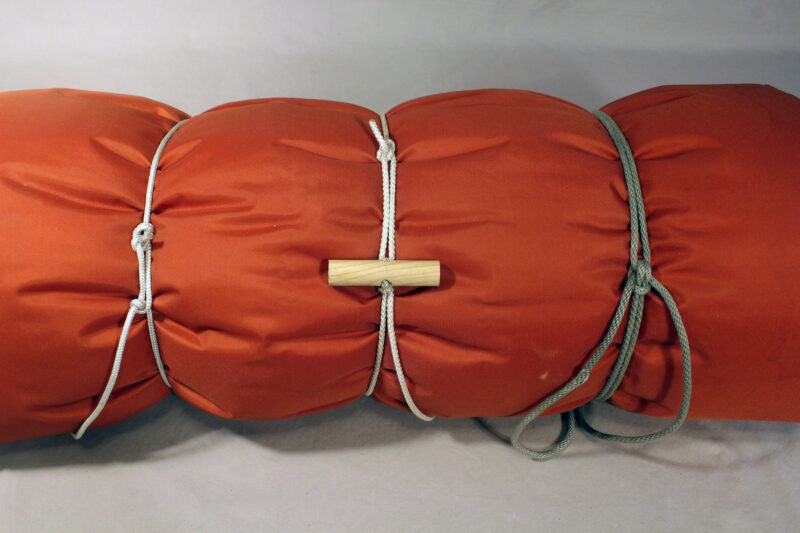 Photographs by the author
Photographs by the authorThis self-inflating sleeping pad has the squeeze put on it by three cinches, from left: loop and twist, toggle, and lark’s head.
I’ve found three ways to tie bundles using cord that are easy to use, increase the compression as much as you like, and release easily. All rely on friction, so it’s best to use cord that has some texture to it. Smooth-braid nylon cord is very slippery. If that’s what you have to work with, you can hold the tension by adding a slipped hitch around the standing line where it meets the loop, taking a couple of turns around and underneath the toggle, or square-knotting the tail ends over the lark’s head.
Loop and Twist
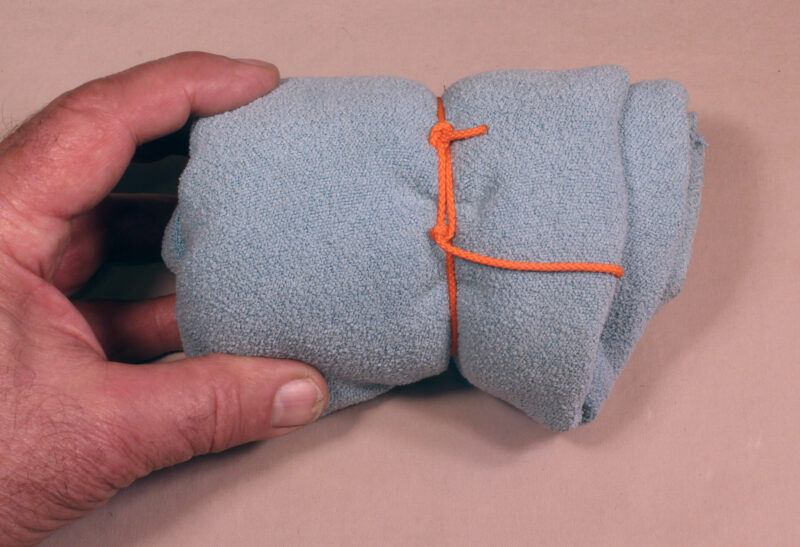
A length of 1/16″ braided cord works well to keep a 20″ x 38″ camp bath towel in a compact package.
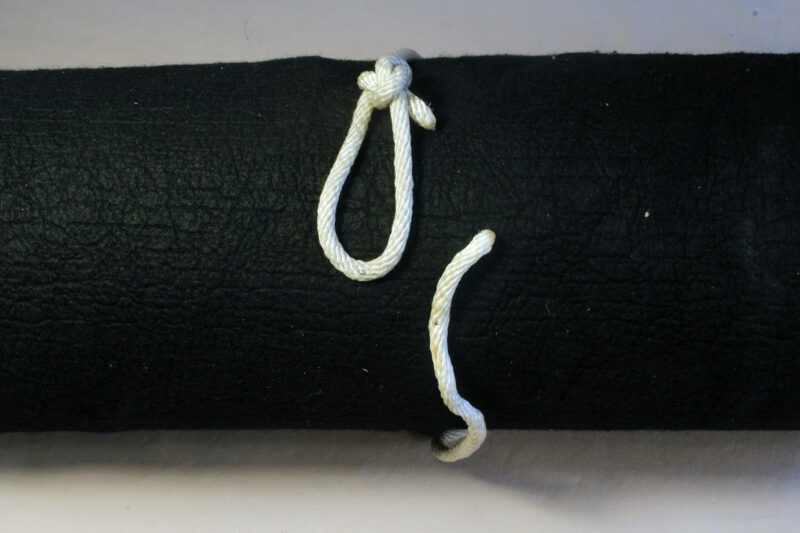
The loop-and-twist cinch begins with a loop formed by a bowline, as seen here, or a figure-eight on a bight.
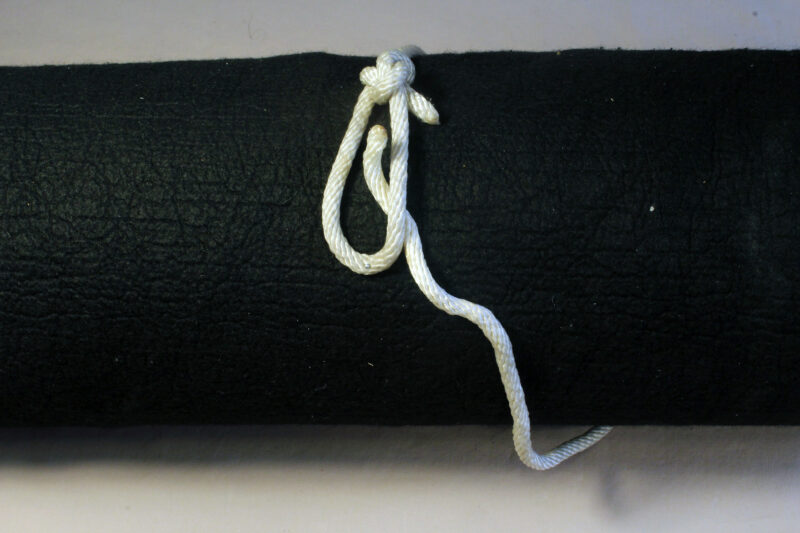
Tuck the tail end through the loop from the back side.
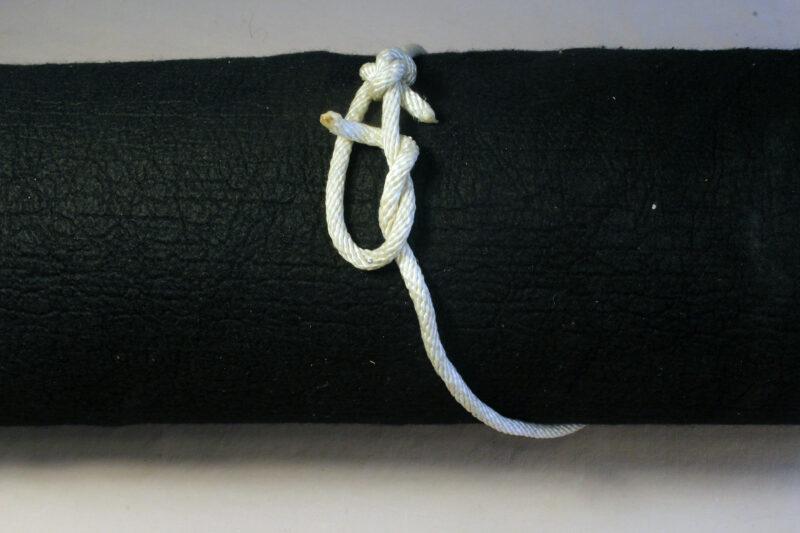
Take a turn around the side of the loop and bring the tail end through again.
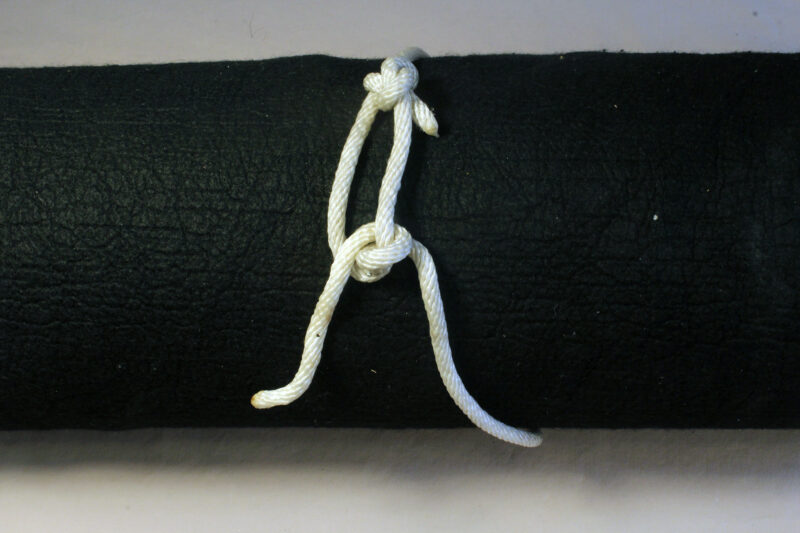
Pull the tail end down.
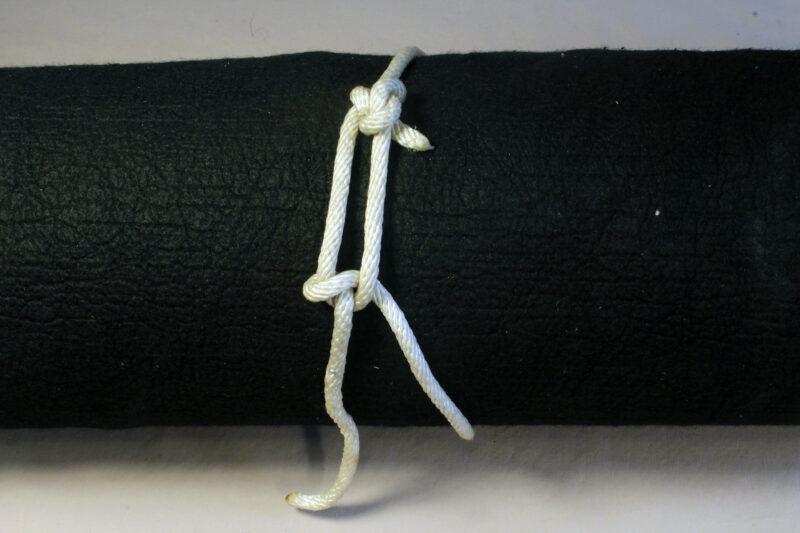
When you pull the tail end tight, the twist will flip and trap the tail end against the bottom of the loop.
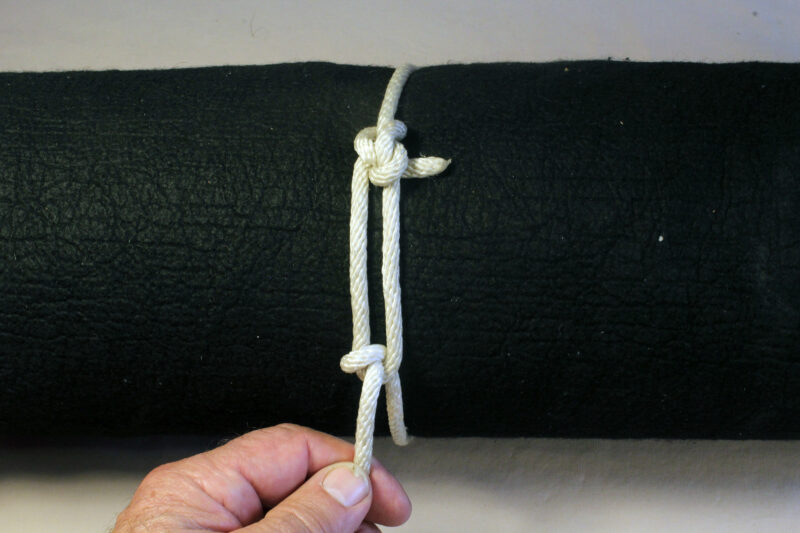
Pull the tail end to tension the cinch. It will lock when you let go of the tail.
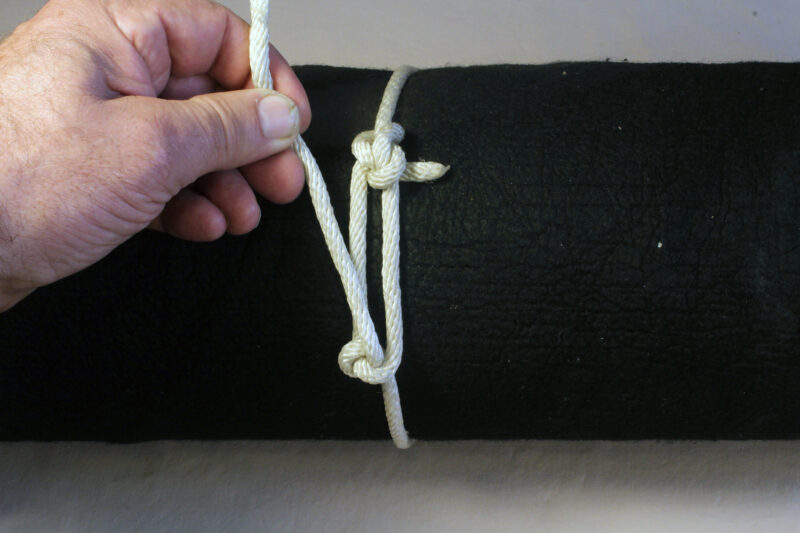
To release the cinch, pull the tail end up.
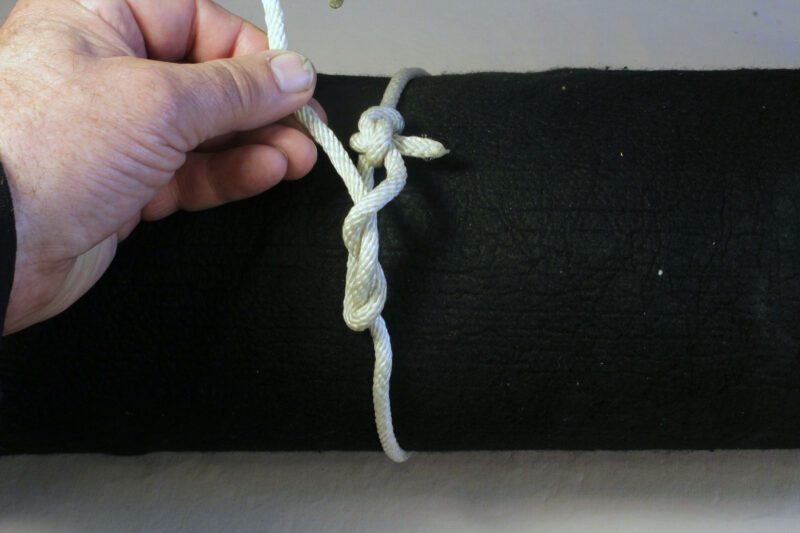
A hard pull on the tail end will straighten it so it can be pulled back, loosening the cinch.
Toggle
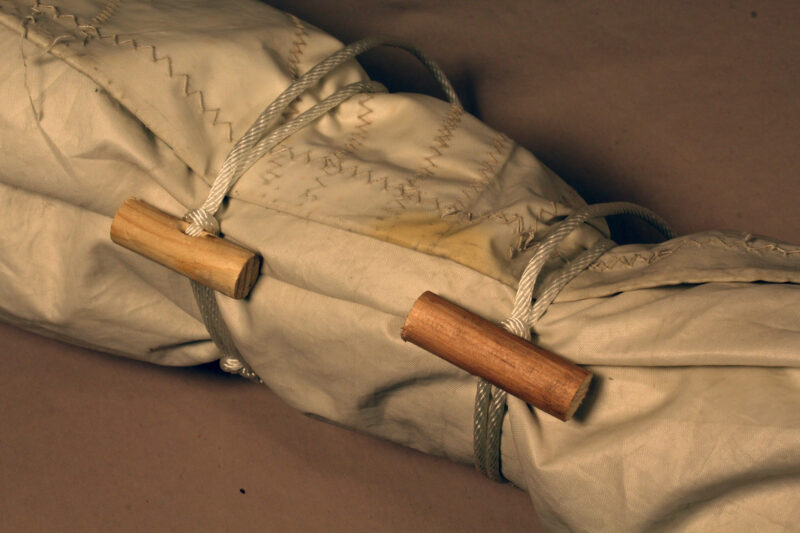
Toggle cinches work well for bundling sails around their spars.
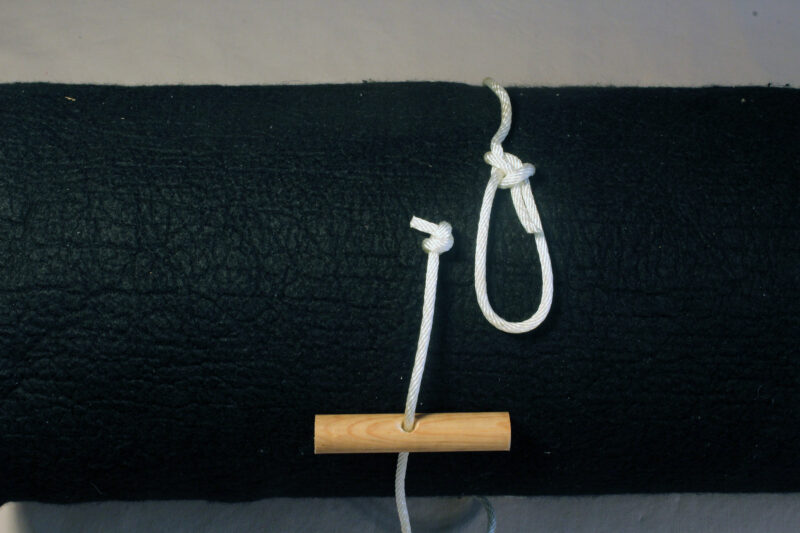
The toggle cinch starts with a loop—either a bowline or a figure-eight on a bight. The tail end is slipped through a toggle made from a dowel. A stopper knot keeps the toggle from slipping off.
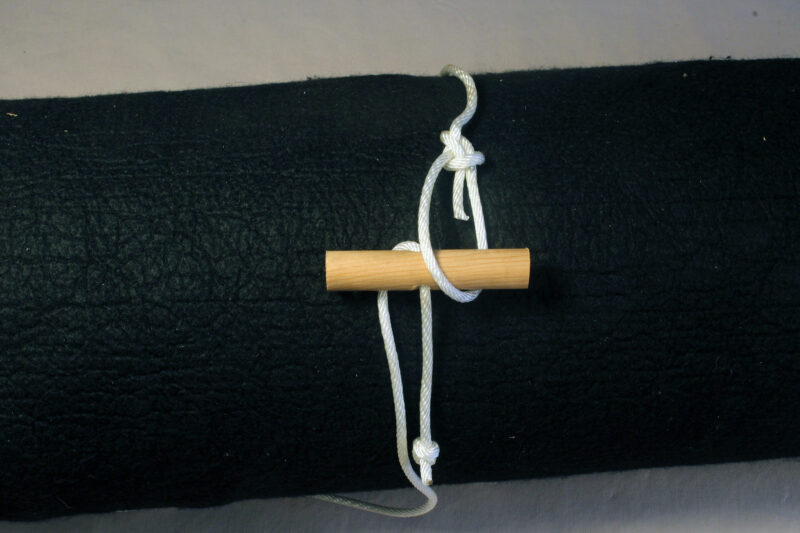
Lead one end of the toggle through the loop.
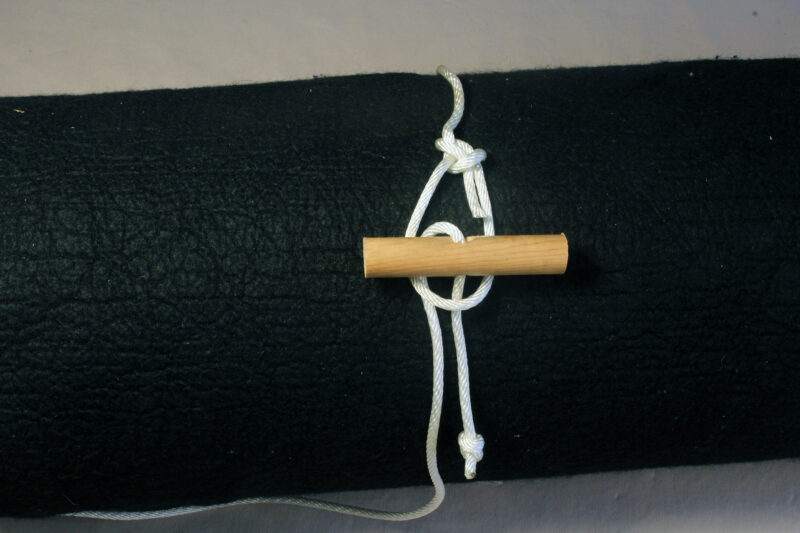
After the other end of the toggle is through the loop, both sides of the line running through it are under the loop.
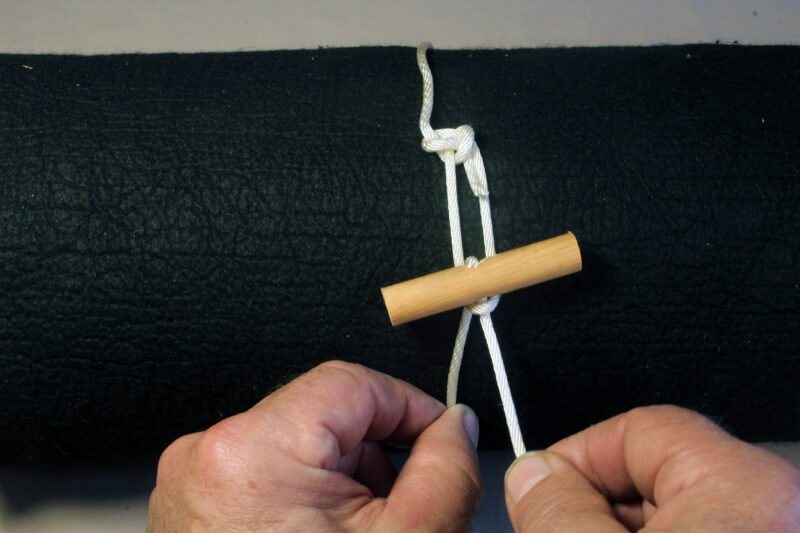
Pull the tail end, here on the right, to tension the cinch. You can hold the standing part of the line while you pull the line tight. You can also hold the toggle. If you hold the loop end of the line, you won’t be able to pull the tail end through the toggle.
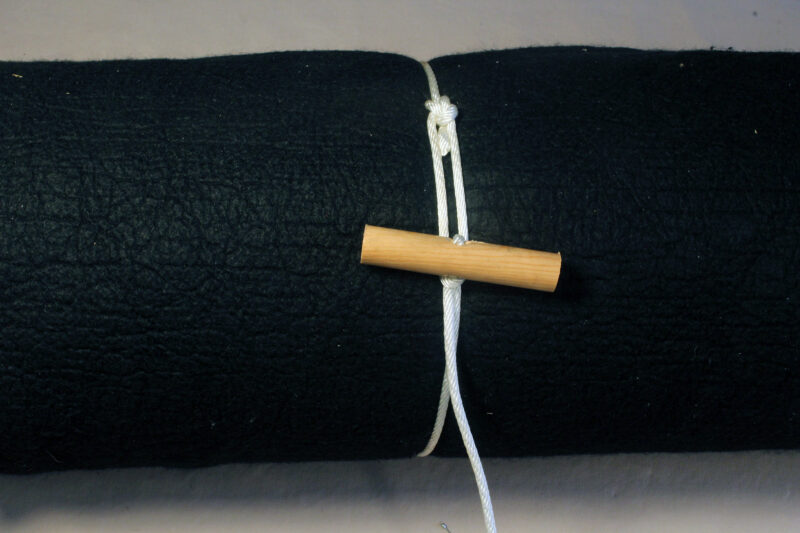
The toggle can apply and hold a lot of tension around the bundle.
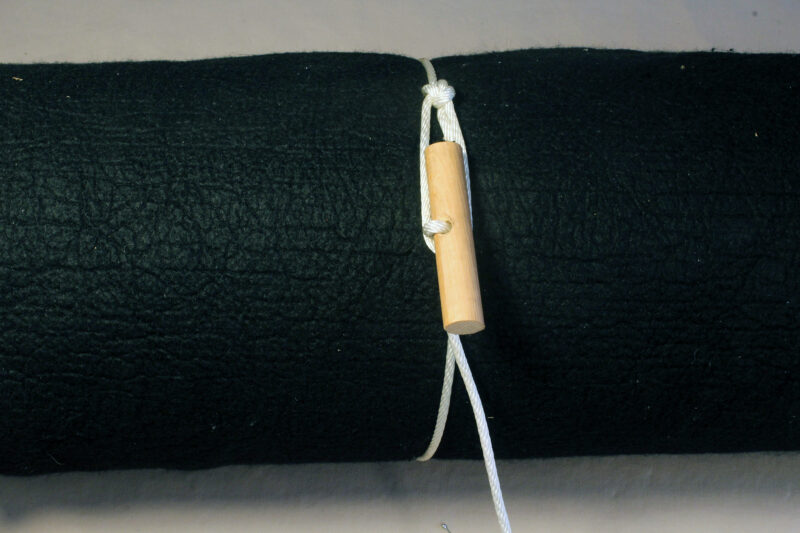
To release the toggle cinch, rotate the toggle parallel to the loop.
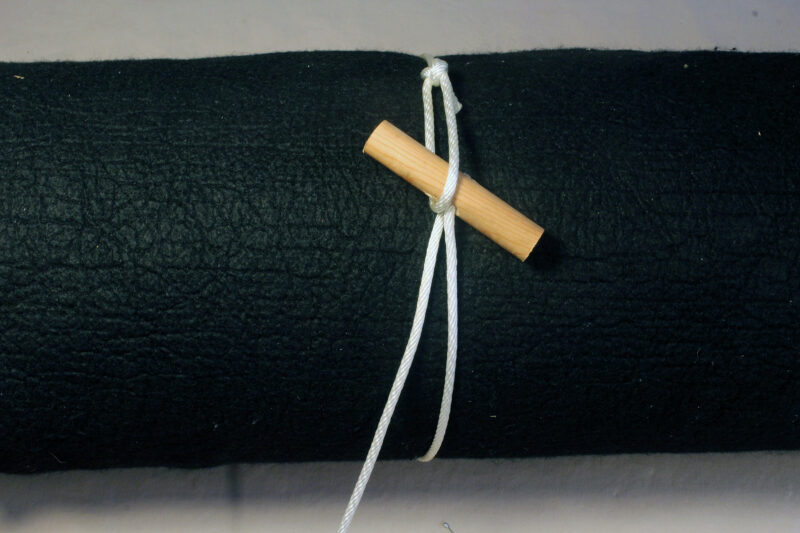
Push that end through the loop and out to the side. The other end will follow, releasing the toggle.
Lark’s Head
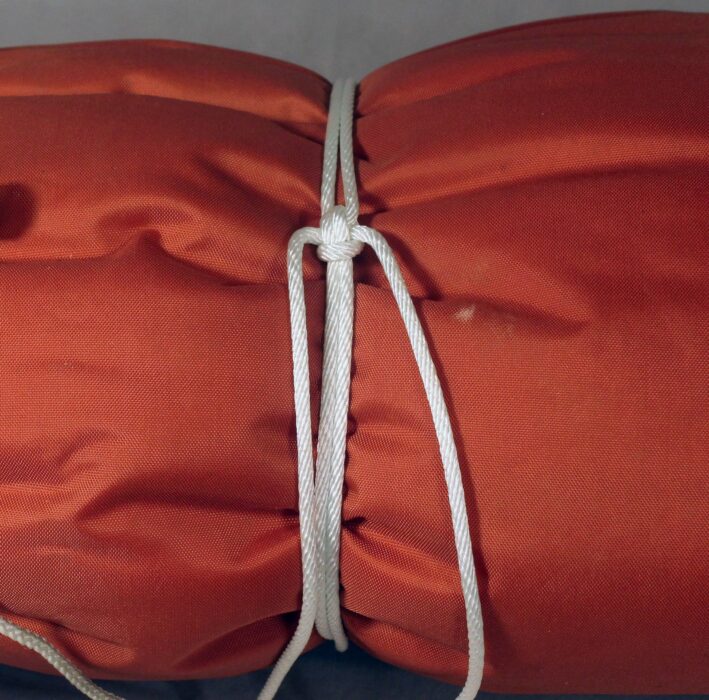
Pulling the tail ends of the lark’s-head cinch in opposite directions square to the cinch applies the tension around the bundle.
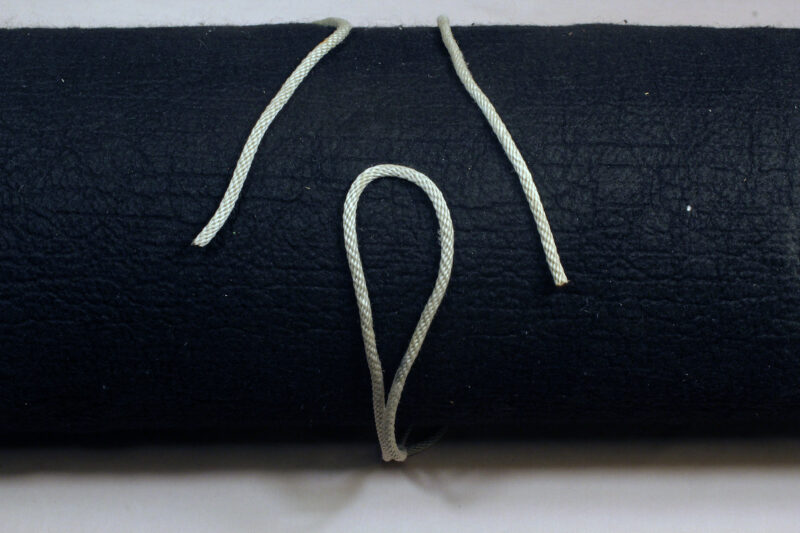
Start the lark’s-head cinch with a loop in the middle of the line and the tail end around the bundle.
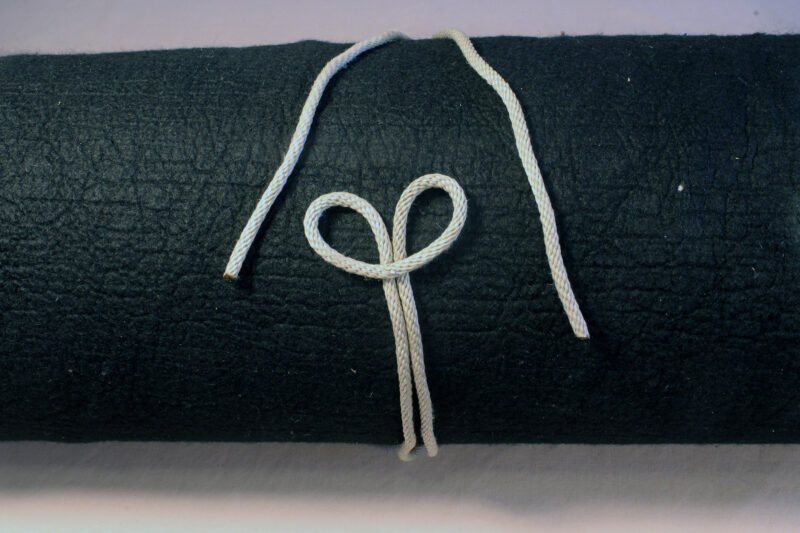
Fold the loop over itself to create two loops side by side.
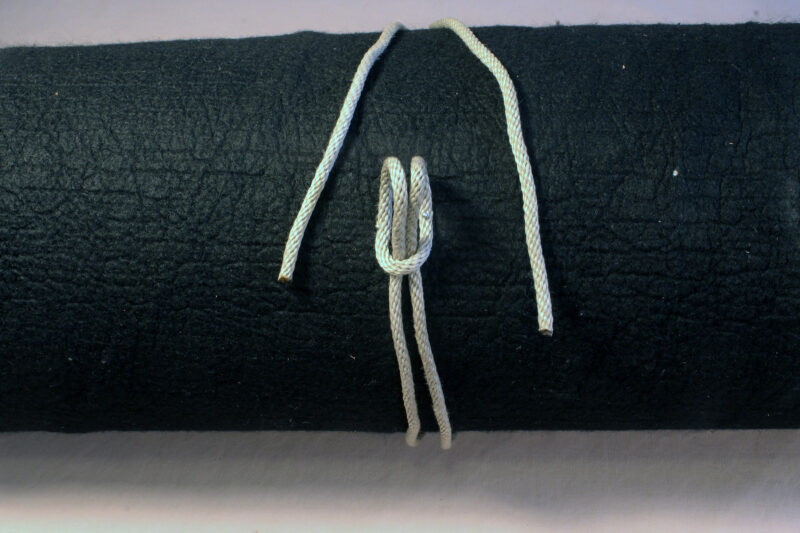
Fold the two loops back to lie alongside each other. This is the lark’s head.
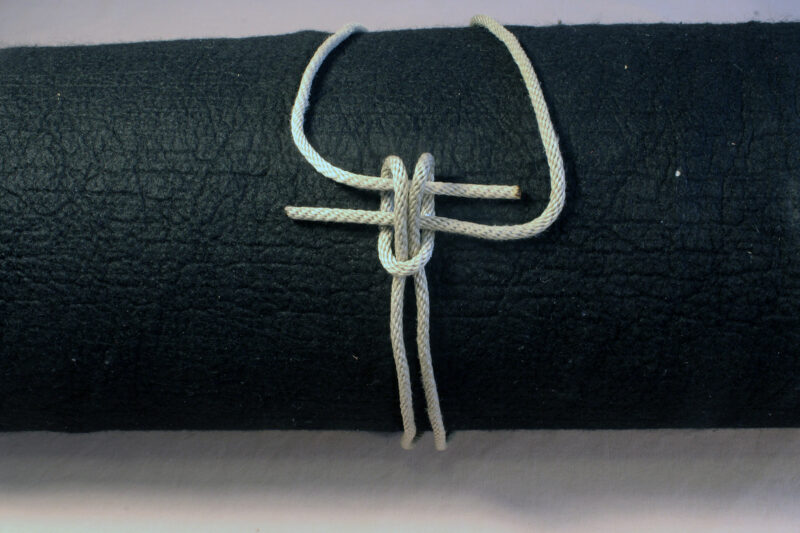
Feed the tail ends through the lark’s head in opposite directions.
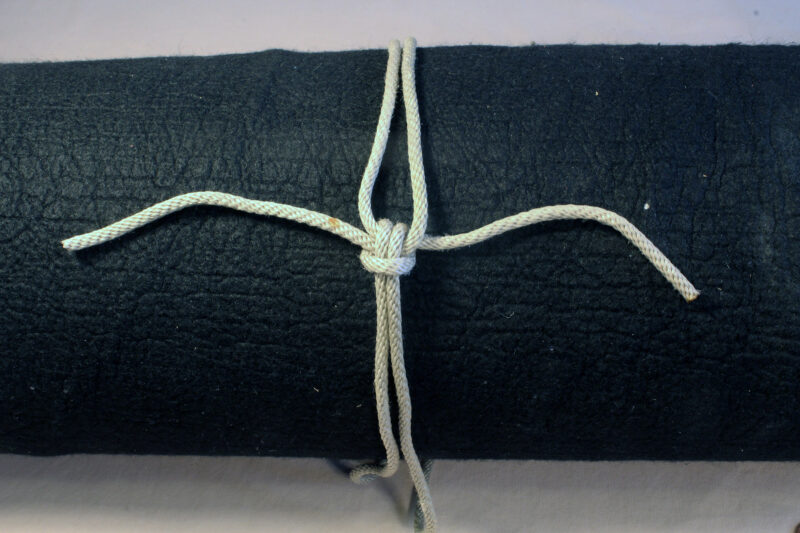
Pull the lark’s head tight around the tail ends.
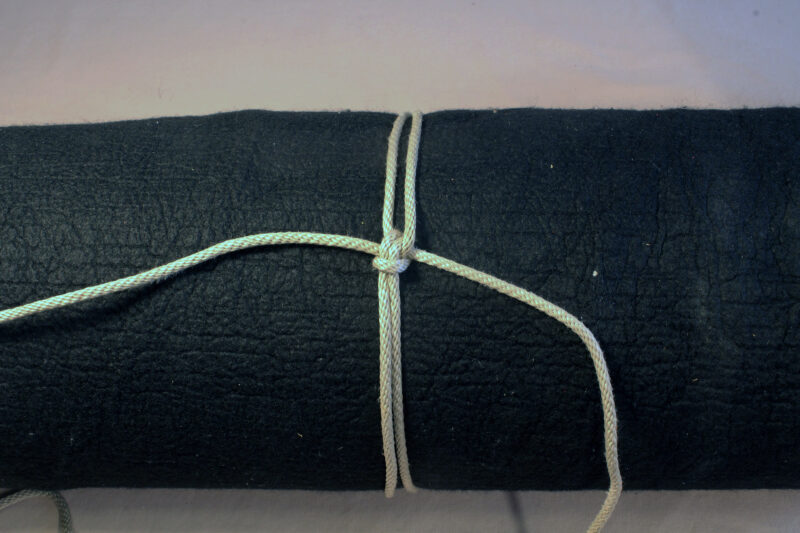
Pull the tail ends tight. The lark’s head will hold the tension.
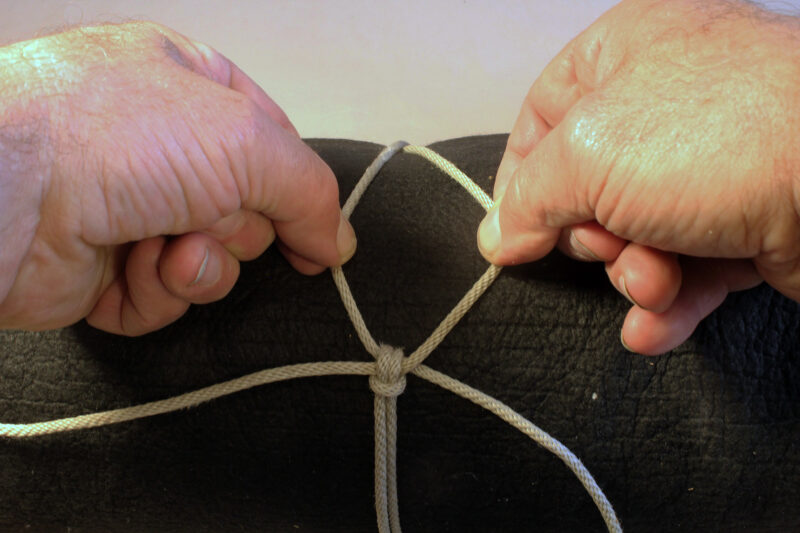
To release the cinch, pull the tail ends back through the lark’s head.
Christopher Cunningham is the editor of Small Boats.
You can share your tips and tricks of the trade with other Small Boats Magazine readers by sending us an email.
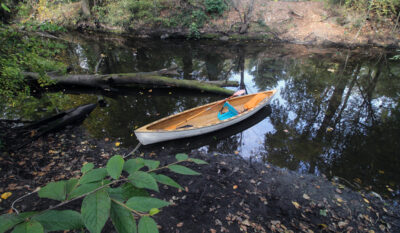



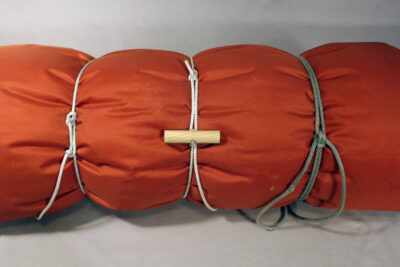
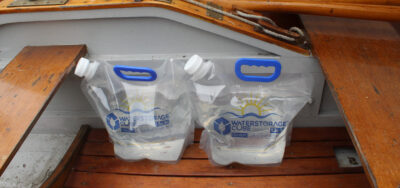
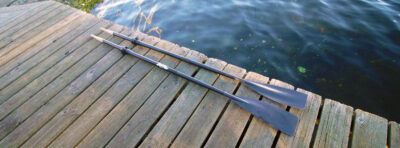


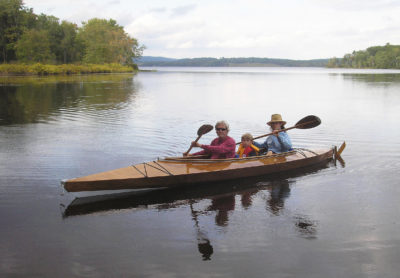


That third one by passing the working ends through a lark’s head from the other side is mighty slick. Can’t say I’ve ever seen it. Whatever gave you the idea?
I can’t claim to have come up with any of the cinches. I often watch how-to videos and occasionally find things that would be useful in boating pursuits. I found a few bushcraft Youtube channels that featured the cinches. I didn’t find any of them in Ashley’s Book of Knots and thought they might be unknown in boating circles.
Those look like excellent techniques, Chris! Many thanks! I’ve been in the habit, for many years now, of keeping a spool of nylon twine around for light-duty fastenings like these, but you’re right, it’s slippery stuff! I’m wondering what kind of cord you prefer? The texture of the stuff in the photos makes me think of cotton?